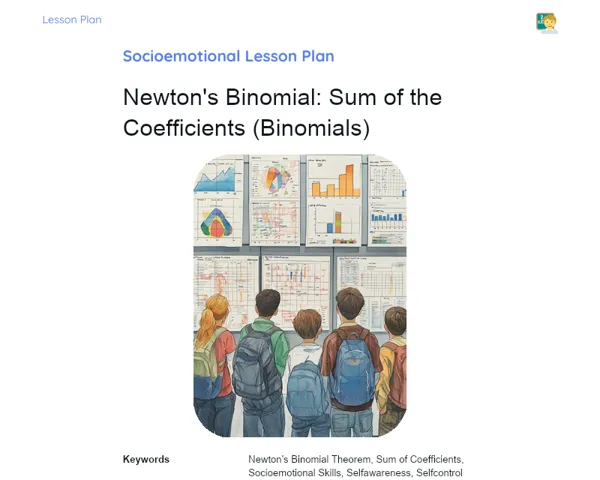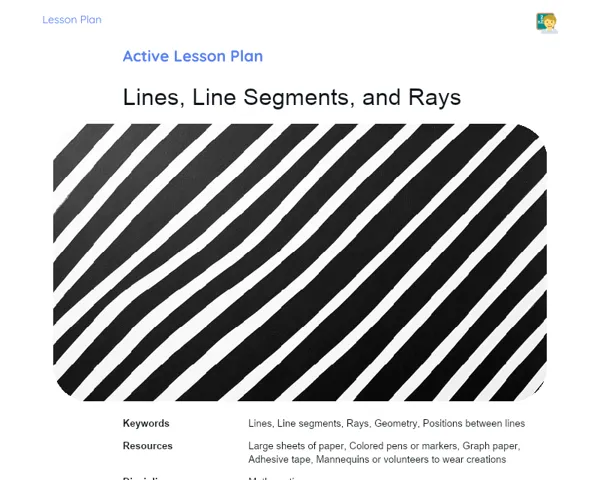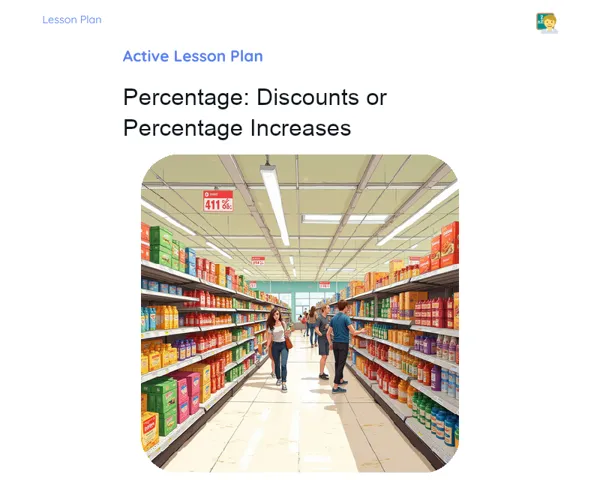Lesson Plan | Socioemotional Learning | Analytic Geometry: Equation of the Circle
| Keywords | Analytical Geometry, Circle Equation, Center, Radius, Self-awareness, Self-regulation, Responsible Decision Making, Social Skills, Social Awareness, RULER Method, Guided Meditation, Mathematical Mindfulness, Cartesian Plane, Problem-Solving, Reflection, Emotional Regulation, SMART Goals |
| Resources | Graph paper sheets, Ruler, Pencil, Eraser, Guided Meditation material (audio or text), Whiteboard and markers, Eraser, Projector (optional), Computer or tablet (optional for digital visualizations) |
| Codes | - |
| Grade | 12th grade |
| Discipline | Mathematics |
Objective
Duration: 10 to 15 minutes
This stage aims to introduce essential concepts of the circle equation. It prepares students to accurately identify and apply the center and radius in various scenarios. Additionally, it seeks to lay down foundational understanding that will be expanded through hands-on activities, while nurturing socioemotional skills like self-awareness and self-regulation, especially when they encounter challenges in grasping the topic.
Objective Utama
1. Explain the equation of a circle (x - x')² + (y - y')² = R², identifying the center (x', y') and the radius R.
2. Utilize the circle equation to resolve real-world problems involving circles.
Introduction
Duration: 10 to 15 minutes
Emotional Warmup Activity
Mathematical Mindfulness
The selected emotional warm-up activity is Guided Meditation, focusing on enhancing concentration and relaxation. This practice aids students in being present, fostering focus and mental readiness for the Analytical Geometry class.
1. Instruct students to sit comfortably, with feet flat on the floor and hands resting on their knees.
2. Guide them to close their eyes and focus on their breathing—taking deep breaths in through the nose and exhaling slowly through the mouth.
3. After a few deep breaths, ask them to be aware of the present moment, noting any areas of tension and encouraging them to relax those parts.
4. Lead a short visualization, prompting students to imagine a serene place where they feel secure and at ease. Describe this place in detail, motivating them to mentally explore it.
5. Once they finish visualizing, gently guide them back to the classroom while maintaining the calm feeling.
6. Conclude the meditation by encouraging them to open their eyes slowly and take a few deep breaths before commencing the class.
Content Contextualization
The equation of a circle is crucial not just for solving mathematical problems, but also for grasping various phenomena around us—such as the circular shape of planets, wheels, and elements in art and architecture. Being able to identify and manipulate circles equips students to tackle practical issues and appreciate the beauty of geometry in everyday life. Furthermore, engaging with equations fosters problem-solving and critical thinking abilities, which are vital for both personal and professional growth. This mathematical exploration also teaches us to navigate emotions like frustration and perseverance, thereby enhancing our emotional and mental resilience.
Development
Duration: 60 to 75 minutes
Theory Guide
Duration: 20 to 25 minutes
1. Concept of Circle and Its Equation: A circle consists of all points in a plane that are equidistant (radius, R) from a fixed point (center, (x', y')). The equation for a circle is (x - x')² + (y - y')² = R².
2. Center of the Circle: The center denotes the point (x', y') at the heart of the circle. This point is crucial for determining the circle's position within the Cartesian plane.
3. Radius of the Circle: The radius indicates the constant distance R between the circle's center and any point on its circumference.
4. Derivation of the Circle Equation: If a point P(x, y) lies on the circle, the distance from P to the center (x', y') equals R. By applying the distance formula, we arrive at (x - x')² + (y - y')² = R².
5. Practical Example: For example, consider a circle with its center set at (2, 3) and a radius of 5. Hence, the circle's equation will be (x - 2)² + (y - 3)² = 25. This example serves well to illustrate how to identify the center and radius from the equation.
6. Analogies: Draw a parallel between a circle and one drawn with a compass, where the compass's pivot point represents the center and the distance from the pivot to the pencil serves as the radius. This analogy can aid in visualizing the concept.
Activity with Socioemotional Feedback
Duration: 30 to 35 minutes
Exploring Circles on the Cartesian Plane
Students will form groups to tackle practical problems utilizing the circle equation. They will determine the center and radius of given circles, and sketch these circles on the Cartesian plane. Furthermore, every group will devise a unique example and exchange it with another group to solve.
1. Form groups of 3 to 4 students.
2. Provide each group with two sheets of graph paper and a ruler.
3. Distribute two circle equations to each group for identifying centers and radii.
4. Groups will draw the identified circles on graph paper and mark the centers and radii clearly.
5. Following this, groups will create a new circle equation and swap it with another group.
6. Each group will then solve the received equation, pinpoint the center and radius, and sketch the new circle on graph paper.
Discussion and Group Feedback
To implement the RULER method during the group discussion, begin by inviting students to recognize the feelings experienced while solving the problems (like frustration, satisfaction, curiosity). Encourage them to understand the roots of these emotions—whether it be difficulty interpreting the equation or joy in solving it accurately. Prompt them to name these emotions and express their impact on their learning and teamwork.
Finally, guide them in regulating these emotions by discussing strategies to face frustration or bolster motivation in mathematical challenges. Encourage them to think about how these strategies can be applicable in other facets of their lives, emphasizing the significance of self-control and perseverance. This dialogue fosters students' development of socioemotional skills, which are crucial for both academic and personal triumph.
Conclusion
Duration: 15 to 20 minutes
Reflection and Emotional Regulation
At the lesson's conclusion, prompt students to contemplate the challenges faced during the activities and their emotional management. They can pen a brief paragraph or join a group discussion. Inquire about specific instances where they felt frustration, satisfaction, or curiosity, and how they dealt with those feelings. Encourage them to reflect on strategies employed to calm down or motivate themselves and how these strategies can be transferred to other challenging scenarios, both in the classroom and beyond.
Objective: The aim of this section is to stimulate self-evaluation and emotional regulation, guiding students to recognize effective strategies for managing tough circumstances. By reflecting on their emotions and their management during class, students can identify behavioral patterns and cultivate skills for overcoming future challenges more adeptly.
Glimpse into the Future
Conclude the class by encouraging students to establish personal and academic goals related to the subject matter learned. For instance, they could aspire to solve a specific number of problems involving circles before the next class or review Analytical Geometry concepts weekly. Prompt them to consider goals that are specific, measurable, achievable, relevant, and time-bound (SMART).
Penetapan Objective:
1. Resolve at least five circle equation problems by the next class.
2. Engage in weekly reviews of Analytical Geometry material.
3. Actively participate in classroom group discussions.
4. Implement emotional regulation techniques when facing challenges in mathematics. Objective: The aim of this section is to bolster student autonomy and the practical application of their learning, promoting ongoing academic and personal growth. By establishing clear and specific goals, students can direct their efforts more effectively, encouraging a sense of responsibility and command over their learning journey.



